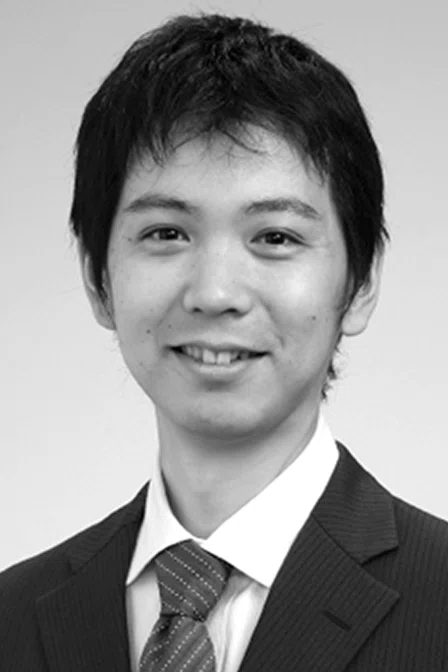1. Pooler BD, Hernando D, Reeder SB. Clinical Implementation of a Focused MRI Protocol for Hepatic Fat and Iron Quantification. AJR Am J Roentgenol. 2019 Jul;213(1):90-95. doi: 10.2214/AJR.18.20947.
‡ Technology in development that represents ongoing research and development efforts. These technologies are not products and may never become products. Not for sale. Not cleared or approved by the US FDA or any other global regulator for commercial availability.
result


PREVIOUS
${prev-page}
NEXT
${next-page}
Subscribe Now
Manage Subscription
FOLLOW US
Contact Us • Cookie Preferences • Privacy Policy • California Privacy PolicyDo Not Sell or Share My Personal Information • Terms & Conditions • Security
© 2024 GE HealthCare. GE is a trademark of General Electric Company. Used under trademark license.
A time to return
A time to return

Utaroh Motosugi, MD, PhD
Kofi Kyoritsu Hospital
Yamanashi, Japan
As we come to the end of 2021 – another year marked by the COVID-19 pandemic – many of us will have the opportunity to travel to Chicago for the Radiological Society of North America (RSNA) annual scientific sessions. Many meetings in the last year were cancelled or moved to a virtual environment due to the virus and travel restrictions, but that is starting to change. While smaller meetings may benefit from an online or webbased approach, I do believe getting together face-to-face and networking with our colleagues is one of the most important aspects of these assemblies. I am personally ready to return to in-person meetings.
To celebrate the return to some type of normalcy post-COVID-19, this issue of SIGNA™ Pulse of MR features a section dedicated to "Return to Play." In this section, you’ll find articles from leading hospitals, clinicians and researchers on helping athletes return to play after a musculoskeletal (MSK) or neurological injury. In particular, researchers from the Medical College of Wisconsin and Mātai Medical Research Institute share how the SIGNA™ Premier is helping to advance clinical understanding of concussion. A team at Emory Healthcare is collaborating on the use of fMRI to identify athletes at risk for injury using biomechanical methods and neural signatures. The Hospital for Special Surgery describes the role of MR in helping determine when an athlete can return to play, while Shields Health Care Group, RNR and Clinica CEMTRO Madrid share their experiences with AIR™ Recon DL and oZTEo in MSK imaging. Rounding out this section is an article from the University of Wisconsin-Madison on using MR to evaluate myocarditis in athletes after COVID-19 infection and, from Stanford, how PET/MR is identifying generators of pain in sports medicine.
Of course, body imaging remains an important and widespread use of MR systems and technology. Inside this issue you can read how advances such as AIR™ Recon DL and AIR™ Coils are propelling imaging of the prostate at 1.5T, as well as the breast and the cardiovascular system. You’ll find cardiac, body and PET/MR case studies where MR has truly made a difference in care, including a case of a severely ill pediatric Crohn’s patient. Rounding out this issue are an introduction to Olea Medical’s breastscape® intelligent MR workflow application and a whitepaper on oZTEo, describing how using GE Healthcare’s ZTE sequence enables the excellent visualization of bony anatomy.
Artificial intelligence (AI) and deep-learning (DL) applications will continue to make a significant impact in MR image reconstruction. Reducing noise and increasing signal with technologies such as AIR™ Recon DL is only the beginning, in my opinion. I believe that by combining DL-based reconstruction with conventional techniques (parallel imaging and compressed sensing), MR images will continue to look more beautiful than ever. MR, especially in body imaging, can be challenging due to the presence of imaging artifacts; DL may help overcome this. Additionally, in the future, AI reconstruction may enable susceptibility artifact-free MR images by combining with susceptibility maps, such as QSM‡.
Finally, focused MR1, a term proposed by Dr. Scott Reeder at the University of Wisconsin-Madison, is an interesting approach for MR imaging that may improve the availability of MR scanners for more patients and help further establish the use of MR to answer very specific clinical questions. Clinical management of patients could change with time. To maximize the advantage of MR for all patients in need of appropriate imaging, it may be time to rethink the MR protocol to shorten the table time for specific clinical purposes. We need new ideas and technologies, and also good communication with clinicians, to achieve this. As a community, radiologists need to continue to dream big to give hope and opportunity to solve key clinical questions with MR imaging.
The SIGNA™ Pulse of MR Editorial Board and editors graciously thank Dr. Utaroh Motosugi for his guidance and contributions to the publication as our 2021 Guest Editor. As a frequent contributor to SIGNA™ Pulse of MR, Dr. Motosugi has shared his expertise in body imaging and the role of AI-infused technologies in image acquisition and reconstruction. We are indebted to him for sharing his knowledge and experiences to further advance clinical MR and education.









